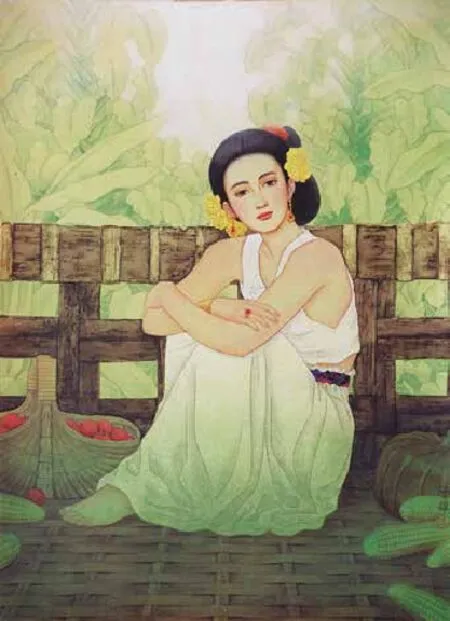Xu Qixiong: Master in Gongbi Style
2016-10-27BySunQunhao
By Sun Qunhao
Xu Qixiong: Master in Gongbi Style
By Sun Qunhao
Xu Qixiong (1934-2015), a Chinese painting master, passed away at his home in Orange County, California on the night of December 24, 2015. Xu is remembered as an artist who helped start the renaissance of the Gongbi style in the 1980s. Gongbi, a traditional painting style, emphasizes elaborate brushwork and spares no efforts to feature details and colors. I frst met him through work more than 20 years ago. He was a man easily remembered: he was silvered haired at the age of 60. Never dressed in a fancy style, he looked elegant like the Gongbi style he pursued all his life. He was articulate and logical, speaking in a thoughtful way.

风情依旧Elegance, a painting by Xu Qixiong
After graduation from the Central Academy of Fine Arts in 1960 as a major of traditional Chinese painting, he worked for People's Daily in Beijing for years. He dedicated to painting beautiful women in the Gongbi style. His artworks were at frst considered alternative to say the best. Later, he was denounced for his undisguised dedication to portraying beauty in his art. In 1965, he was forced to leave Beijing and went back to Wenzhou, his hometown in southern Zhejiang Province.
It was not until the 1980s that he made a spectacular comeback. Prominent artists such as Hua Junwu, Cheng Shifa and Huang Miaozi praised Xu's unique contribution to the Gongbi style and considered him an outstanding artist who injected new elements into the tradition. Xu's art and contribution to the Gongbi style is widely recognized in art books, yearbooks and dictionaries.
Xu is a phenomenon in the history of Chinese art. A critic once concluded that the Gongbi style was doomed to vanish as history moved ahead. And it was true that the Gongbi struggled and was relegated onto the verge of extinction after 1949. However, the style is fourishing thanks to the renaissance Xu helped launch in the 1980s. A national exhibition for the Gongbi artists now takes place at a regular interval and has occurred nine times since the comeback of the style.
A turning point in Xu's life and art came about in 1984 when he became a member of the newly founded Zhejiang Institute of Traditional Painting based in Hangzhou. He had just moved to Hangzhou from Wenzhou for a new start of his career after his tutor Ye Qianyu urged him to come back to the bigger world.
He served as honorary president of Cixi Sanbei Institute of Traditional Painting for years. He came upon the appointment by accident. During his stay in Hangzhou, Xu traveled across Zhejiang a lot. With some artist friends, he came to Cixi, a city in eastern Zhejiang, in the spring of 1993. At a meeting with local amateur artists, he was invited to act as honorary president of the institute. But Xu wasn't sure if it was appropriate for a Wenzhou native to be a honorary president of an art institute in Cixi. The host insisted and he accepted the honor in heartwarming applause.
The master contributed a great deal to the institute. He visited the city frequently. In the 1990s he sold a painting of his for 100,000 and donated the cash to the institute when the institute was planning to have an offce building constructed. One hundred thousand was a huge fortune back then.
The greatest contribution Xu made was in 2002 when the ffth national exhibition for Gongbi artists took place in Cixi, a county-level city. It is quite rare for a county-level city to host a top national art event. Xu was the executive chair of the jurors for the exhibition. He picked Cixi for a reason: Chen Zhifo (1896-1962),a Cixi native, was a prominent Gongbi artist and art educator that,in Xu's opinion, should not be forgotten. Prior to the exhibition, Xu visited Cixi many times and engaged himself in preparations. The exhibition was a huge success. After the exhibition, a collection of the best works of the exhibition was published by the People's Fine Arts Publishing House.
Rain Flowers is a representative artwork of Xu Qixiong. Feng Jicai, a writer of national renown and crusader for urban preservation based in Tianjin, mentioned the masterpiece in an interview with me. Feng said he advised Xu not to sell the masterpiece even if someone had offered 50 million. I learned that Wu Guanzhong, a prominent Chinese artist, was overjoyed with the masterpiece and said it was priceless. The August 2014 issue of Cultural Dialogue used this masterpiece for its cover.
